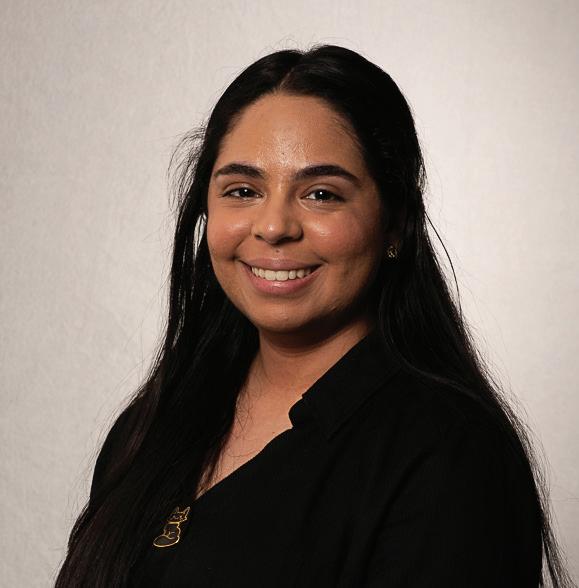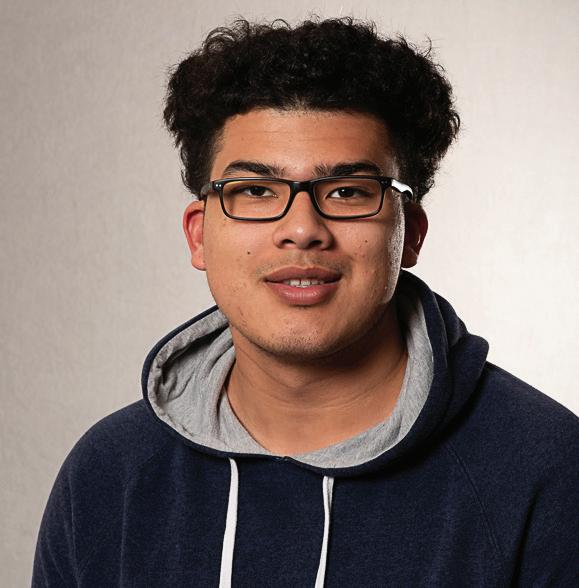
3 minute read
PRO: Reopen states
BY GISELLE ORMENO
I n the past few weeks, a surge of protestors from various states vocalized their desire to end the Safer at Home orders. The growing discontent and demand for states to reopen is something that governors can no longer ignore. It's essential to stimulate the economy as quickly as possible to avoid long-term damaging e ects.
Advertisement
The Labor Department reported on April 24 that nearly 10 million people had led for unemployment insurance over the past two weeks.
Nick Bunker, economic research director at job search site Indeed, said to CNBC that today's numbers of unemployed are abysmal and an understatement of the damage already done to the U.S. economy.
Georgia Gov. Brian Kemp said in a news conference on April 20 that he will start reopening businesses that were previously nonessential in stages over the weekend.
Massage therapy centers, tness centers, barbershops, hair salons and gyms were allowed to reopen on April 25 as long as these businesses followed social distancing and strict hygiene procedures.
Kemp stated that the next step is taking place on April 27, where movie theaters, restaurants and private social clubs can open as well.
However, other businesses such as night clubs and amusement parks are going to continue to remain closed, pending additional advice from public-health experts.
Even though Kemp's decision to reopen nonessential businesses has been met with pushback by President Donald Trump, he insists on going ahead with plans to jump-start the economy as early as possible.
Kemp is con dent that business owners that decide to reopen will adhere to Minimum Basic Operations that prioritize the health and well-being of employees and customers.
Florida Gov. Ron DeSantis has already reopened beaches for "essential activities" in the northern part of the state on April 17.
Gatherings of 50 or more people are still banned according to DeSantis and strongly urges people to socially distance themselves on the beach as they exercise or do activities like sur ng.
South Caroline Gov. Henry McMaster, on April 21, opened up beaches and previously deemed nonessential businesses. He acknowledges that there is still a dire situation and people must continue to social distance.
While there is no set end date for California, Gov. Gavin Newsom joined a multi state task force along with Washington and Oregon to discuss how to reopen their states.
Counties in California, such as Los Angeles, have plans to reopen gradually.
Los Angeles County Department of Public Health Director Barbara Ferrer spoke of di erent approaches being in place as they begin to lift their health o cer order.

Retail stores are going to limit how many people can be in the store at any given time so people can maintain a good amount of distance between themselves.
Los Angeles County Supervisor Kathryn Barger said that the county would need to make sure that its hospitals control the capacity to treat both people who are sick and those with standard medical needs.

That includes guaranteeing the hospitals are su ciently sta ed, have su cient resources to perform testing and have an adequate number of ventilators and other medical supplies to handle routine care as well as the possible increase of COVID-19 patients.
The rate of unemployed people in the United States is believed to have gone up more than 13%, according to The New York Times. Reopening the states has to happen because the longer people stay at home and the longer that businesses remain closed, the higher the jobless rate increases.
The rami cations of how the economy will look after COVID-19 lls many people with dread and anxiety to the point that they are protesting out in the streets, demanding businesses to reopen.
If states reopen sooner rather than later, while still following safety guidelines and keeping strict rules of social distancing, then it will atten the curve and relieve fears that many Americans are currently having about the future of the economy.
gormeno.roundupnews@gmail.com
They may also participate in class more because they have already spoken and been engaged in the meeting.
Some students who are not used to taking online classes may view every online session as daunting. Student time could help ease their anxiety by giving a soft start to their classes.
Student time would not detract from classes because it would only last five minutes, and professors would be able to monitor it to prevent Zoombombing.
Some professors are already doing this, so it wouldn’t be hard to implement across all classes.
One simple change could help students connect with their classmates and feel like they’re back in the classroom. newsroom.roundupnews@gmail.com










